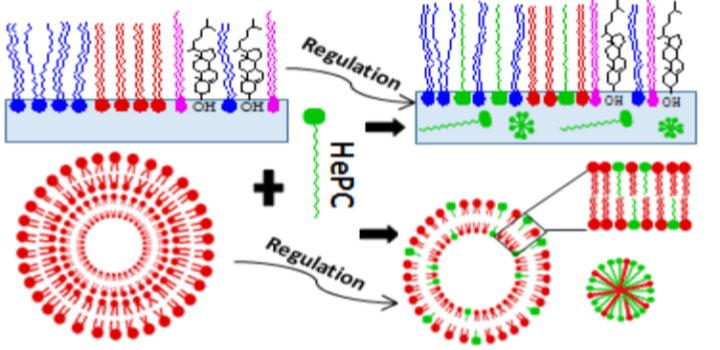Zulueta YLM Diaz et al., BBA-Biomembranes, 2017
Hexadecylphosphocholine (HePC, miltefosine) is an alkylphospholipid used clinically for the topical treatment of cancer and against leishmaniasis. The mechanism of action of HePC, not yet elucidated, involves its insertion into the plasma membrane, affecting lipid homeostasis. It has also been proposed that HePC directly affects lipid raft stability and function in cell membranes. The present work deals with two main questions in the understanding of the action of HePC: the bases for membrane selectivity and as a membrane perturbator agent. We explored the interaction of HePC with lipid monolayers and bilayer vesicles, combining monolayer penetration experiments, Brewster angle microscopy and differential scanning calorimetry. Several membrane compositions were tested to explore different rheological conditions, phase states and lateral structures. Additionally, the kinetics between the soluble and the membrane form of HePC was explored. Our results showed an increase in elasticity induced by HePC incorporation in all the membranes studied. Differential incorporation was found for membranes in different phase states, supporting a preferential partitioning and a higher dynamic kinetics of HePC incorporation into fluid membranes in comparison with condensed or liquid-ordered ones. This effect resulted in phase equilibrium displacement in phospholipids and membranes containing liquid-ordered domains. The presence of cholesterol or ergosterol induced a fast incorporation and slow desorption of HePC from sterol-containing monolayers, favoring a long residence period within the membrane. This contributes to a better understanding of the HePC regulation of membrane-mediated events and lipid homeostasis.
Authors: Diaz Zulueta YLM, Fanani ML



